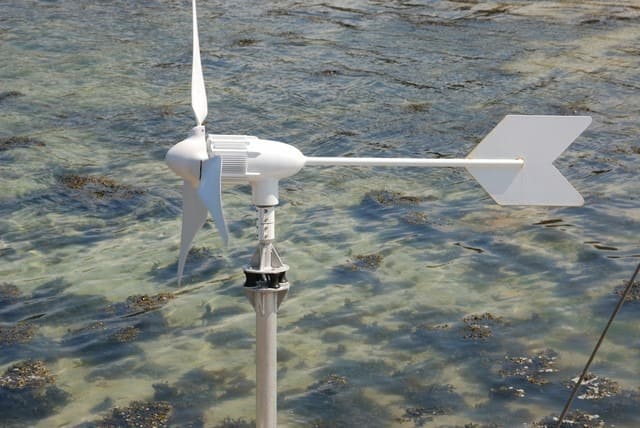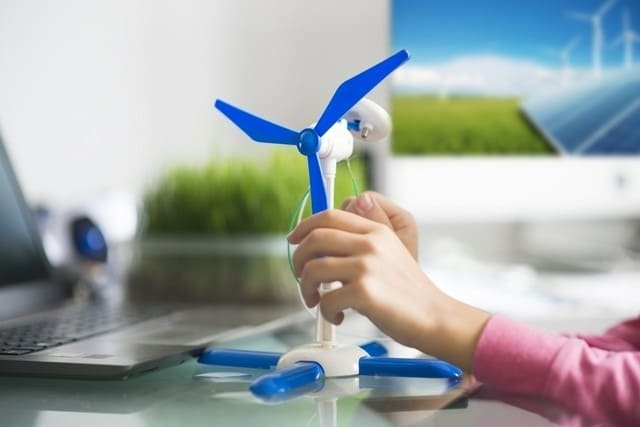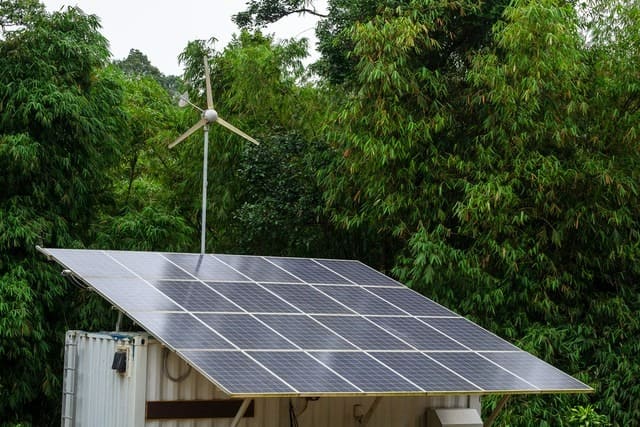What is a wind farm?
Wind turbine generator farms, also known as wind power farms, are large-scale installations of grid-connected wind turbine generators. These turbines are strategically positioned on sites with favorable wind resources. By arranging the turbines according to the terrain and prevailing wind direction, wind turbine generator farms create a fleet of machines that generate electricity to supply the grid.
Wind turbines like crops arranged on the ground, so the image is called “wind field”. Wind farms emerged in California in the early 1980s, and are now widely used in countries around the world that are vigorously developing wind power.
The wind turbines in a wind farm need to be located at a sufficient distance from each other to avoid excessive turbulence or the “wake effect” that can severely reduce the power output of the wind turbines in the back row.
Roads are required for the transportation of large equipment (especially blades) to the installation site. Transmission lines are also required to connect the output of the wind farm to the grid access point.

Components of a wind farm and requirements for wind farm construction
①A wind farm consists of
②The wind turbine fleet
③Collector section
④Boosting substation
⑤Wind farm management system
Construction requirements for wind farms:
The primary condition for the site of a wind farm must be rich in wind energy resources. The construction of large wind farms is only suitable when the annual average wind speed is above 5m/s, the effective wind power hours at 30m height is above 6000h, and the effective wind energy density is above 240w/m^2.
In fact, the factors affecting the quality of wind energy are annual average wind speed, average wind power density, wind frequency distribution, the number of available hours of effective wind speed, and the stability of wind direction.
Wind direction stability prevails at the site of wind farms. Stable wind direction not only increases the utilization rate of wind energy, but also prolongs the life of the turbine.
The degree of turbulence at the wind farm should be small. Wind is random and is affected by site surface roughness and nearby obstacles. The formation of turbulence in wind farms is generally caused by wind channels that are too rough, or by sharp changes in wind speed and direction due to obstacles.
It not only affects the output of the wind turbine, but also causes vibration and uneven loading of the wind turbine, reducing the service life of the wind turbine, and in serious cases, causing accidents in which the paddles fly out.
The natural disasters of the wind turbine site should be less. Strong winds, hail, thunderstorms, earthquakes, etc. will have an impact on the wind turbine and so on.

When selecting a site for a wind power project, several factors should be considered:
Terrain and geological conditions:
The site should have relatively flat terrain and favorable geological conditions for civil construction.
Transportation:
The accessibility of the site for the transportation of equipment and major construction materials.Including the feasibility of large cranes and flatbed trucks, should be taken into account.
Proximity to grid access point:
The wind farm should be located as close as possible to the grid access point. Such as existing substations and transmission lines, to minimize power loss and associated costs.
Environmental impact:
The site should avoid bird flight routes, migratory bird and animal habitats, nature reserves.Military installations, and densely populated areas to minimize ecological damage and disruption to normal life.
For offshore wind power projects, additional considerations include:
Compliance with regulations:
Offshore wind farms should adhere to the regulations outlined in the Interim Measures for Offshore Wind Power Development and Construction Management issued by the National Energy Administration and the State Oceanic Administration.
Offshore distance and water depth:
Offshore wind farms should generally be located at least 10 kilometers away from the shore, and the water depth should be at least 10 meters when the width of the mudflat exceeds 10 kilometers.
Sensitive marine areas:
Offshore wind farms should not be planned in marine nature reserves, marine special protection zones, important fishery waters, typical marine ecosystems, estuaries, bays, or natural historical sites.
By considering these factors, a suitable wind power site can be selected that balances the requirements for efficient power generation while minimizing environmental impact.

